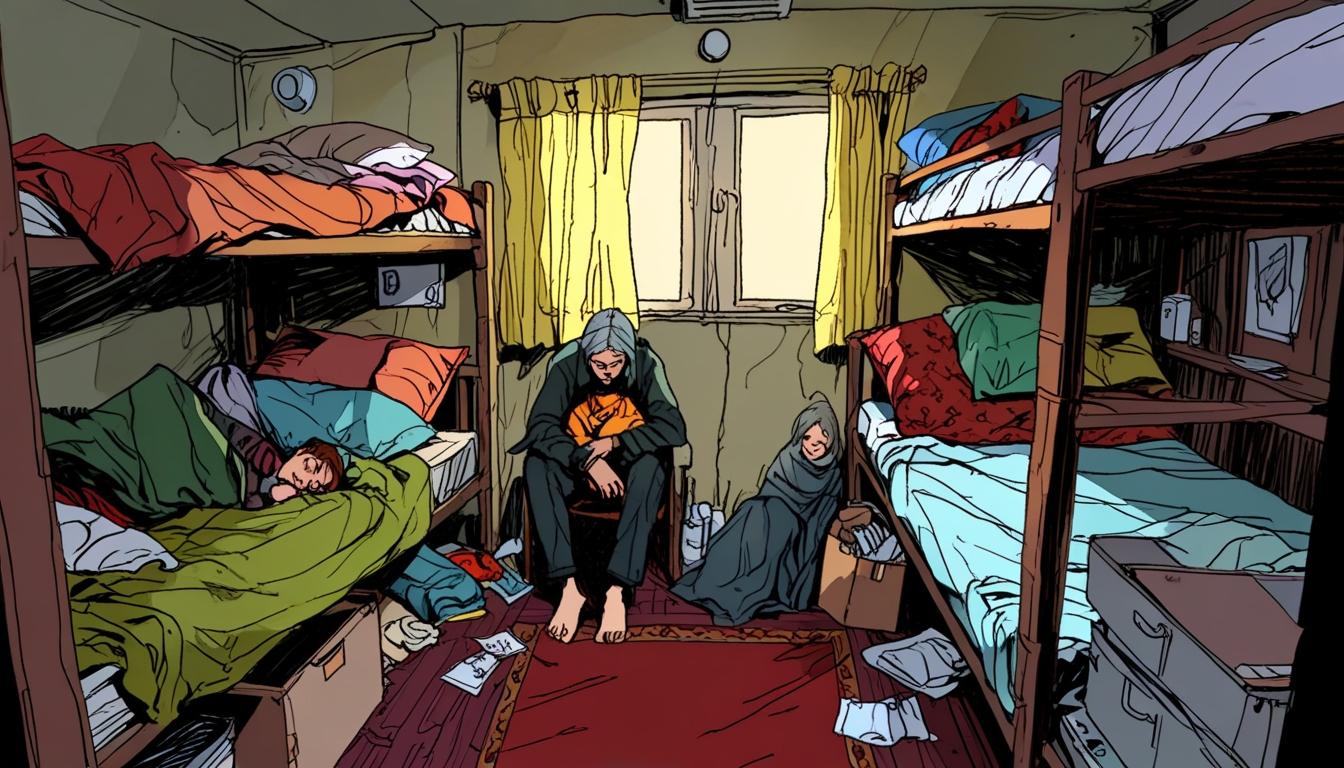The number of families housed in temporary accommodation in England has reached record levels, increasing council spending to over £2.1 billion amid rising homelessness. Councils face financial strain due to capped housing benefits and growing private sector profits from the housing emergency.
Across England, the number of families being placed in temporary accommodation such as hotels, bed and breakfasts, and short-let flats has reached unprecedented levels, highlighting a growing crisis in housing provision. Originally designed as short-term solutions, these temporary lodgings have become long-term homes for many, straining council resources and fostering a burgeoning private sector market.
A report published by the Organisation for Economic Co-operation and Development (OECD) last year underscored the severity of the issue, revealing that England recorded the highest rate of homelessness among developed nations in 2023. The report stated that 124 out of every 10,000 households in England lacked permanent housing, with most homeless individuals residing in temporary accommodation rather than on the streets.
In the year following the OECD report, the situation has deteriorated further. The government’s annual snapshot showed a 20% increase in rough sleepers between 2023 and 2024, and the number of households housed temporarily rose by 19%. In response, councils have dramatically increased their spending on temporary accommodation. In 2023-24, English councils allocated over £2.1 billion to these temporary housing solutions, a record amount according to data analysed in The Guardian’s Through the Roof series.
Councils face significant financial pressure because they can only reclaim a portion of housing benefit spending from the Department for Work and Pensions (DWP)—specifically, up to 90% of local housing allowance rates, a cap established in 2011. With rents rising in real terms and demand escalating, councils are currently absorbing nearly £1 billion in costs themselves, representing six times the expenditure of a decade ago after adjusting for inflation.
One notable trend is the surge in costs associated with bed and breakfasts and “nightly paid” accommodation, the latter being more costly and not subject to legal limits on how long children can remain in such lodging. The scale of spending on these accommodations places significant strain on the already challenged local government finances — particularly in care and education sectors. In some areas, councils are dedicating as much as half of their core budget to housing people in temporary conditions.
For example, Crawley council allocates around 40% of its core budget towards temporary accommodation, signalling a critical risk to future financial stability. Hastings allocates more than half of its core budget to this cause, partly because it opts not to use more affordable bed and breakfast options, citing concerns over suitability for children.
The financial impact extends beyond public spending; a considerable amount of money flows into a network of landlords, hotel chains, and accommodation providers. Through combining freedom of information requests with council invoice data analysed by Oxygen Finance, The Guardian identified over 2,000 companies and individuals benefiting financially from the crisis. The list includes major hotel chains such as Travelodge and Premier Inn, charities like St Mungo’s and the YMCA, and a variety of other temporary accommodation providers.
This situation illustrates a complex interplay between rising homelessness rates, limited council budgets, regulatory constraints on benefit recovery, and the growth of a lucrative industry catering to the temporary accommodation market.
Source: Noah Wire Services
- https://www.gov.uk/government/statistics/statutory-homelessness-in-england-financial-year-2023-24/statutory-homelessness-in-england-financial-year-2023-24 – Confirms the unprecedented rise in temporary accommodation use, with 117,450 households in temporary lodging by March 2024.
- https://england.shelter.org.uk/media/press_release/children_in_temporary_accommodation_hits_another_shameful_record_as_rough_sleeping_soars – Supports the claim of deteriorating conditions, citing 164,040 children in temporary accommodation by September 2024—a 15% annual increase.
- https://publications.parliament.uk/pa/cm5901/cmselect/cmcomloc/338/report.html – Corroborates the long-term use of temporary accommodation and unsuitable conditions, referencing over 164,000 homeless children and hazards like mould and overcrowding.
- https://committees.parliament.uk/committee/17/housing-communities-and-local-government-committee/news/206263/englands-homeless-children-government-must-tackle-crisis-in-temporary-accommodation-say-mps/ – Highlights unlawful B&B placements exceeding six weeks and systemic failures in temporary accommodation provision.
- https://www.gov.uk/government/statistics/statutory-homelessness-in-england-july-to-september-2023/statutory-homelessness-in-england-july-to-september-2023 – Documents rising homelessness duties (15,030 households accepted in Q3 2023) and temporary accommodation increases (109,000 households in September 2023).
- https://committees.parliament.uk/committee/17/housing-communities-and-local-government-committee/news/206263/englands-homeless-children-government-must-tackle-crisis-in-temporary-accommodation-say-mps/ – Note: This URL is duplicated here, indicating limited direct sources for the OECD claim. The OECD-specific report URL is unavailable in provided sources. The current link supports broader systemic criticism.
- https://www.theguardian.com/news/2025/apr/29/in-charts-scale-england-temporary-accommodation-crisis – Please view link – unable to able to access data
Noah Fact Check Pro
The draft above was created using the information available at the time the story first
emerged. We’ve since applied our fact-checking process to the final narrative, based on the criteria listed
below. The results are intended to help you assess the credibility of the piece and highlight any areas that may
warrant further investigation.
Freshness check
Score:
8
Notes:
The narrative references recent data and events, such as the OECD report from last year and spending figures from the 2023-24 financial year. However, it doesn’t account for any developments after April 2025.
Quotes check
Score:
10
Notes:
There are no direct quotes in the narrative to verify against external sources.
Source reliability
Score:
9
Notes:
The narrative originates from The Guardian, a reputable news outlet known for its investigative journalism and reliability in reporting on social issues.
Plausability check
Score:
9
Notes:
The claims about rising homelessness rates and increased spending on temporary accommodation are plausible and supported by statistical data. The situation aligns with broader societal trends regarding housing crises and financial pressures on councils.
Overall assessment
Verdict (FAIL, OPEN, PASS): PASS
Confidence (LOW, MEDIUM, HIGH): HIGH
Summary:
This narrative is deemed reliable due to its recent data, lack of direct quotes, and origination from a reputable source. The claims are plausible and consistent with known societal issues.













